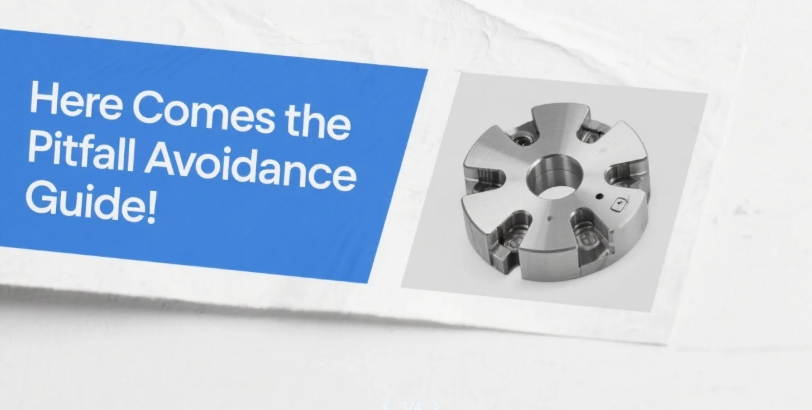Finding a trustworthy CNC machining supplier can feel like navigating a minefield. One wrong step—like overlooking hidden costs or poor quality control—can derail your project and budget. As someone who’s seen manufacturers lose thousands on rushed decisions, I’ve crafted this no-nonsense guide to help you dodge common traps and partner with a supplier that actually delivers.
Why Your CNC Supplier Choice Matters More Than You Think
CNC machining isn’t just about cutting metal—it’s the backbone of aerospace, medical devices, and automotive innovation. A subpar supplier can cause:
- Cost overruns (one company faced 30% extra charges due to "material efficiency" tricks) .
- Delayed launches (late parts = stalled production lines).
- Safety risks (e.g., out-of-spec aircraft components).
Let’s cut through the noise and get you a bulletproof partnership.
7 Non-Negotiables When Vetting Suppliers
1. Quality Certifications: Your First Filter
- Demand proof of ISO 9001:2015 or AS9100 certifications—these aren’t paperwork exercises but enforce strict process controls .
- Red Flag: Suppliers who can’t show certification documents. As one automotive engineer told me: "No ISO? No conversation."
2. Experience in YOUR Industry
- A medical device supplier might ace titanium implants but flounder on automotive turbochargers. Ask:
- "Show me projects similar to mine."
-
"How do you handle [your specific material, e.g., PEEK plastic]?"
- Case in point: Wisconsin Metal Tech’s aerospace client saw defect rates drop 90% after switching to a specialist .
3. Tech & Gear That’s Actually Modern
- Outdated machines = sloppy tolerances. Verify:
- 5-axis capabilities for complex geometries.
- Live tooling for milling-turning combos.
-
Automated inspection (e.g., CMMs).
- Pro Tip: Ask for a virtual shop tour. If they hesitate, worry .
4. Transparency on Costs (Beware the "Too-Good-To-Be-True" Quote)
- The Bait-and-Switch Trap: A "low" quote might hide:
- Material waste scams: Suppliers cramming parts too close, causing burrs that need polishing .
-
Tooling surcharges: "Oh, that internal groove? That’s extra."
- Demand a breakdown of:
- Material costs (with utilization rate proof).
- Setup fees.
- Secondary processing (e.g., anodizing).
5. Communication That Doesn’t Ghost You
- A supplier’s response time during quoting predicts future behavior. Ideal workflow:
- You send drawings → They ask clarifying questions within 24 hours.
- Regular updates (e.g., "Your parts are in QA Thursday").
-
- Horror Story: A prototype startup lost 6 weeks because their supplier "assumed" a tolerance wasn’t critical .
6. Realistic Lead Times (Not Fairy Tales)
- If 5 suppliers promise "2 weeks," but one says "4 weeks with inspection reports," trust the realist. Delays cascade:
-
48-hour delay in CNC → 1-week assembly stall → Missed product launch.
- Ask: "What’s your on-time delivery rate?" (Anything below 95% is suspect) .
7. Post-Sales Support: The Forgotten Lifeline
- When parts fail QC, you need a supplier who:
- Investigates immediately (not "we’ll check next week").
- Shares inspection data.
-
Covers rework costs if they erred.
- Golden Rule: Get post-sale terms in writing before ordering .
5 Deadly Sins to Avoid (Pitfall Roadmap!)
1.Choosing "Big Names" Blindly
- Big ≠ better. One auto firm switched to a smaller shop and got dedicated engineers + faster tweaks .
2.Falling for the Lowest Bid
- Cheap parts often fail stress tests. Spend 10% more upfront to avoid 100% rework costs.
3.Ignoring Design for Manufacturability (DFM)
- Example: A "cool" aluminum chassis design required impossible 0.5mm internal corners. Result: 3 redesign delays.
- Fix: Involve your supplier early in design. Their DFM feedback is gold .
4.Skipping Prototyping
- One medical device maker nixed prototyping to "save time." The final batch had tolerance drift—$250K scrapped .
5.Overlooking Sustainability
- Eco-practices like coolant recycling signal operational discipline. Plus, it avoids future compliance headaches .
Industry Standards: Your Quality Shield
- ISO 2768: Governs machining tolerances (e.g., ±0.1mm for standard parts) .
- AS9100: Non-negotiable for aerospace; mandates traceability for every part .
- Material Certifications: Insist on Mill Test Reports (MTRs) for metals .
�� Reality Check: A CNC shop without these standards is like a surgeon skipping med school.
Case Study: How Precision Saved a Drone Startup
A client designed magnesium alloy drone arms. Their first supplier missed wall thickness specs (0.8mm vs. 1.5mm required), causing mid-flight cracks. After switching to an AS9100-certified partner:
- DFM review caught thin walls pre-production.
- Statistical Process Control (SPC) flagged deviations in real-time.
-
Post-sale support included stress-test videos.
Result: 0 failures in 10,000 units .
Your Supplier Vetting Checklist
|
Criteria |
What to Ask/Verify |
|
Certifications |
ISO 9001:2015, AS9100, IATF 16949 certificates (current!) |
|
Equipment |
5-axis CNC, CMMs, live tooling; request machine model photos/videos |
|
Lead Time Transparency |
"Walk me through your production schedule for a 100-part order." |
|
Cost Breakdown |
Demand line-item pricing (material, setup, finishing, shipping) |
|
Communication |
Test response time; ask for a dedicated contact. |
|
References |
"Connect me with 2 clients in my industry." |
Wrap-Up: Trust ≠ Guesswork
Choosing a CNC partner isn’t about rolling dice—it’s methodical vetting. Prioritize suppliers who:
- Prove expertise in your niche.
- Communicate like their business depends on it (it does).
- Treat quality control like a religion.
Skip the "cheapest now, costly later" trap. The right supplier becomes an extension of your team—saving you time, cash, and cortisol.


